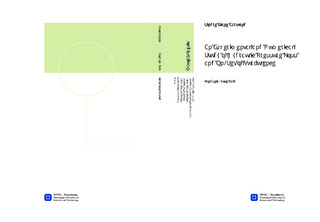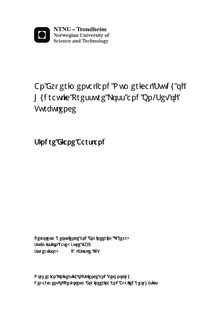| dc.description.abstract | AbstractA long drillstring consists of numerous of diameter changes, where the most frequent is the change due to tool joints for every pipe length. In the upper wellbore sections, were the annular clearance are wide, are the small diameter changes due to tool joints most likely negligible. When drilling the lower wellbore sections and in slim hole drilling, the annular clearance is decreased, thus the geometric changes could affect the hydraulic pressure loss.For the purpose of maintaining wellbore pressure control, the ability to accurately estimate hydraulic pressure loss along the wellbore is essential. By investigating the different segments affecting the fluid flow downstream the mud pump, separately and in combination, it is possible to gain a greater knowledge of hydraulic pressure loss. Increased wellbore control ensures a safer operation, but also a more effective operation, with regard to controlled equivalent circulation density and thus rate of penetration.The main goal in this thesis was to investigate and quantify the contribution to pressure of sequenced tool joints in the string. By building a small scaled lab, experiments were conducted in order to determine the relative difference with and without tool joints, verify existing models and suggest alternative approaches for calculation of the additional pressure drop. Additionally the thesis focus on the impact of on-set of turbulence and its effect on pressure loss, hence the calculation and prediction.Contraction and enlargement in a borehole causes fluid acceleration, deceleration and kinetic energy loss in the mud. Once an obstacle in the well changes the velocity gradients in the mud, the boundary layer is affected, eddies are formed and local or fully turbulent flow regime can occur. By introducing the gradual contraction and enlargement due to tool joints, the velocity gradient in the mud is altered and an additional pressure drop is introduced.The different experiments were carried out with the same base-fluid, applying different concentration of polymers for the purpose of increasing the viscosity. In total four different combinations of the inner steel pipe were planned tested, utilizing one Newtonian fluid and three non-Newtonian fluids. Based on the experiments conducted some findings can be highlighted:? In all tests the presence of tool joints increased the hydraulic pressure loss, also in the laminar region. The highest enhanced pressure loss registered due to tool joints was 90%? Once tool joints are included in the string the on-set of turbulence is strongly shifted towards lower flow rates, which none of the tested models are able to account for.? The presence of tool joints in the string introduces a pressure loss equivalent to a rough obstruction in the annular clearance.? Both modification and the alternative suggested approach, yields more accurate results in the estimation of hydraulic pressure loss with tool joints than the exiting model.The investigation of the previously suggested models and approaches, showed various results in estimation of the additional pressure drop due to tool joints. Only when applying the lowest viscosity, one of the model suggested by Enfis et al. (2011) showed satisfying results for tool joint correction. Increasing the viscosity of the mud, none of the existing models comprehended with the measured values, due to overestimation of the pressure in the laminar region and estimation of on-set of turbulence.Three alternative methods have been suggested, of which two have been investigated in depth. The first one presents a modification of the model suggested by Enfis et al (2011). Applying the new suggested modification of the model, the discrepancy between the measured and the calculated pressure drop were decreased in the turbulent regime, but still with overestimated values in the laminar regime.In the second suggested approach, a regression factor representing increased friction, was presented. By calculating an the frictional enhancement as a function of Reynolds number it was possible to predict a more accurate pressure loss in the higher viscosity range. The regression factor was based on the same principle as Blasius, Moore and Moody in their estimation of pressure loss in pipes with varying surface roughness. The downside of applying a regression approach is the need for continuous experimental investigation in order to create a database based on geometry, annular clearance and fluid rheology. | nb_NO |

